
Jews and French Quebecers
Two Hundred Years of Shared History
The authors of this study have met a challenge of veritable size that not only required scientific rigour, but also necessitated acute sensitivity and objectivity.
Paul Grgoire, Archbishop of Montreal,
October 24, 1986
(translation from the French)
Jews and French Quebecers: Two Hundred Years ofShared History The result is a fresh outlook on history, one that occurs when we discover it from a truly new vantage point. It should rapidly make its way into the manuals.
The result is a fresh outlook on history, one that occurs when we discover it from a truly new vantage point. It should rapidly make its way into the manuals.
Lise Bissonette, Point of View, Le Soleil,
February 18, 1987
(translation from the French)
Jews
& French
Quebecers
Two Hundred years
of Shared History
by Jacques Langlais & David Rome
translated by Barbara Young
Wilfrid Laurier University Press

The translation and publication of
Jews and French Quebecers: Two Hundred Years of Shared History
has been made possible by funding from the Canada Council.
Canadian Cataloguing in Publication Data
Langlais, Jacques, 1921
Jews and French Quebecers
Translation of: Juifs et Qubcois franais: 200
ans dhistoire commune.
Includes bibliographical references.
ISBN 0-88920-998-7
1. Jews - Quebec (Province) - History.
2. Antisemitism - Quebec (Province) - History.
3. Quebec (Province) - Ethnic relations. I. Rome,
David, 1910- . II. Title.
FC2950J5L3513 1991 971.4004924 C91-095062-8
F1055.J5L3513 1991
1991
Wilfrid Laurier University Press
Waterloo, Ontario, Canada
N2L 3C5
Printed in Canada

Cover design by Connolly Art & Design
Originally published as Juifs et Qubcois franais: 200 ans dhistoire commune
( La Corporation des ditions Fides, Montral, 1986).
Jews and French Quebecers: Two Hundred Years of Shared History has been typeset
from a manuscript provided by the translator and verified by the authors.
All rights reserved. No part of this work covered by the copyrights hereon may be reproduced or used in any form or by any means graphic, electronic or mechanical without the prior written permission of the publisher. Any request for photocopying, recording, taping, or reproducing in information storage and retrieval systems of any part of this book shall be directed in writing to the Canadian Reprography Collective, 379 Adelaide Street West, Suite Ml, Toronto, Ontario M5V 1S5.
Contents
The title of this book deserves attention.
This book grew out of a theme chosen by the authors. It is a pooling, or more precisely a combining of their knowledge, talent and judgement. And that is what each has signed or so it seems.
The reality is quite another matter. This book was born of a double experience, that of two very different men brought together by geography. They have followed separate personal paths through an immensely complex historical period full of misunderstandings, leaving a profound mark on their lives.
One is a Catholic priest belonging to a congregation of French origin, a missiology researcher specializing in Asian religions, a Quebec nationalist and lover of French-Canadian folklore who is dedicated to the cause of cross-cultural relations.
The other is a Zionist devoted to Quebecs Jewish community and an archivist with a passion for Quebec history. He is concerned with the period of misunderstanding and hostility between Quebec and the Jews, and more broadly, with the holocausts that have marked all of Jewish history.
The two first met overseas, then in Quebec as neighbours who sincerely wished to become acquainted, as any good neighbours must. They soon realized they would be wise to avoid the pitfalls of current controversy, and to look closely instead at both their differences and their common ground. This led them to piece together a brief history of a community within a community, of Jews among Quebecers, particularly the French Quebecers by whom they were received.
The authors wished to be as fair, as relevant and as clear as possible for their readers. The two communities share many kinship ties. Both have been affected by their minority status. Each ones survival has been under threat and both are still, more or less, in a state of alert. Both are deeply imbued with religious culture, and their basic goals are humanistic. Both are nationalists, and for the Jews this means a complex form of Zionism. Both profess ideals of peace and justice. And both consider language and heritage to be of primary importance.
If each author had set out to write these pages on his own, the task would have been easy. Each would no doubt have given his own accurate and interesting version of the facts. And the result would have been two entirely different books, probably valuable and useful, but also open to controversy.
This book is quite different. It can be compared to the work of a third mind, of Siamese twins separated by the surgery of circumstances, yet deeply attached in a third being who can express itself only in terms judged acceptable by the other two. In the end, those terms are the only ones that seem possible to either one.
The project took months to complete, even longer than it seemed. The experience was fascinating, difficult, even painful on occasion, but it was always rewarding. Readers can share in it by taking a look at the books most troublesome passages and seeing how they were resolved. They might even enjoy verifying for themselves whether the authors faced all the major questions squarely, or perhaps side-stepped certain ones.
There are quite obvious ruptures in the text, which are not there by coincidence. Readers can use them as points of reference in making sense of the deepest realities experienced by these two societies, whose importance goes far beyond simply cross-cultural proximity.
But even that is not the biggest challenge. Readers can personalize the authors experience by analyzing Quebecs present ethnic and cultural plurality with someone from another culture. Not to convince or convert, and certainly not as a game, but to develop their own traditional language and discourse, to grow in the understanding of themselves and their neighbours, each reflected in the other.
Here, then, are the results of a project that has given the authors great satisfaction. The effort to make sense of Quebecs unique destiny has been an exciting challenge. And each of the authors now has yet another reason to love this young society even more deeply than before.
David Rome
My first contact with David Rome dates from the 1950s, when he spoke at Collge Brbeuf in Montreal. It was the first time I had heard an Anglophone Jew speak, in my language, about the relations between Jewish and French Quebecers. The details of his speech now escape me, but it struck me as a milestone event for the two communities.
The name of David Rome has since been associated in my mind with ideas of openness, dialogue and understanding, and with exceptional intelligence regarding our respective histories.
Our paths crossed again some thirty years later, this time at the Monchanin Intercultural Centre. The occasion was a conference for members of various ethnic and cultural communities on the theme Who is a Quebecer? The major presentations at this exchange were published the following year, which led me to seek out David Rome for clarifications to his text. An interview with David Rome cannot be limited to an isolated question. The archivist and historian irresistably takes over the conversation and guides his interviewer through the mysteries of the past. He does so with the ease and generosity of a scholar immersed in his subject to the point of reliving the past as intensely as the present. The conversation lasted for hours, and by the end we had made a resolution: together we would write down the history of the Jews in Quebec.
Next page
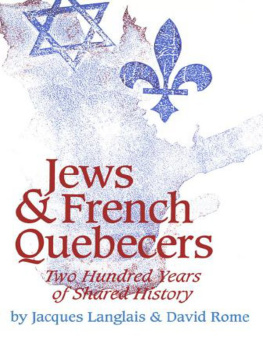
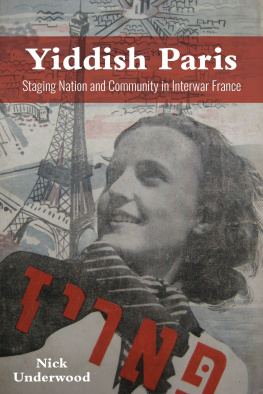

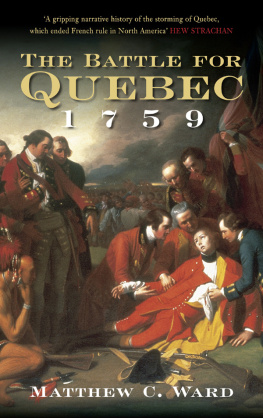
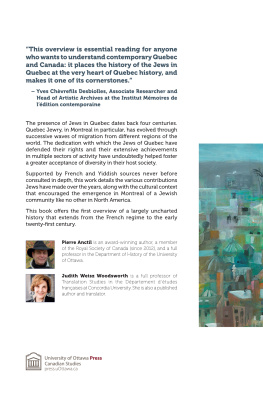

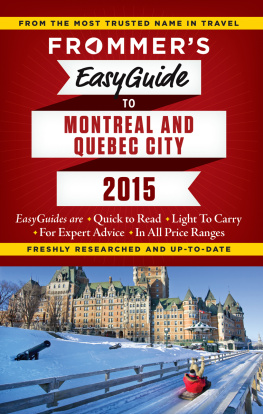
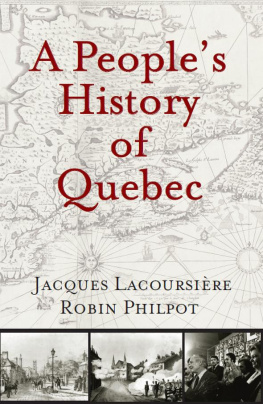
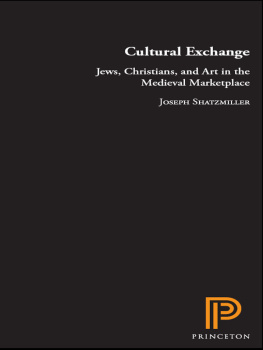

 The result is a fresh outlook on history, one that occurs when we discover it from a truly new vantage point. It should rapidly make its way into the manuals.
The result is a fresh outlook on history, one that occurs when we discover it from a truly new vantage point. It should rapidly make its way into the manuals.
